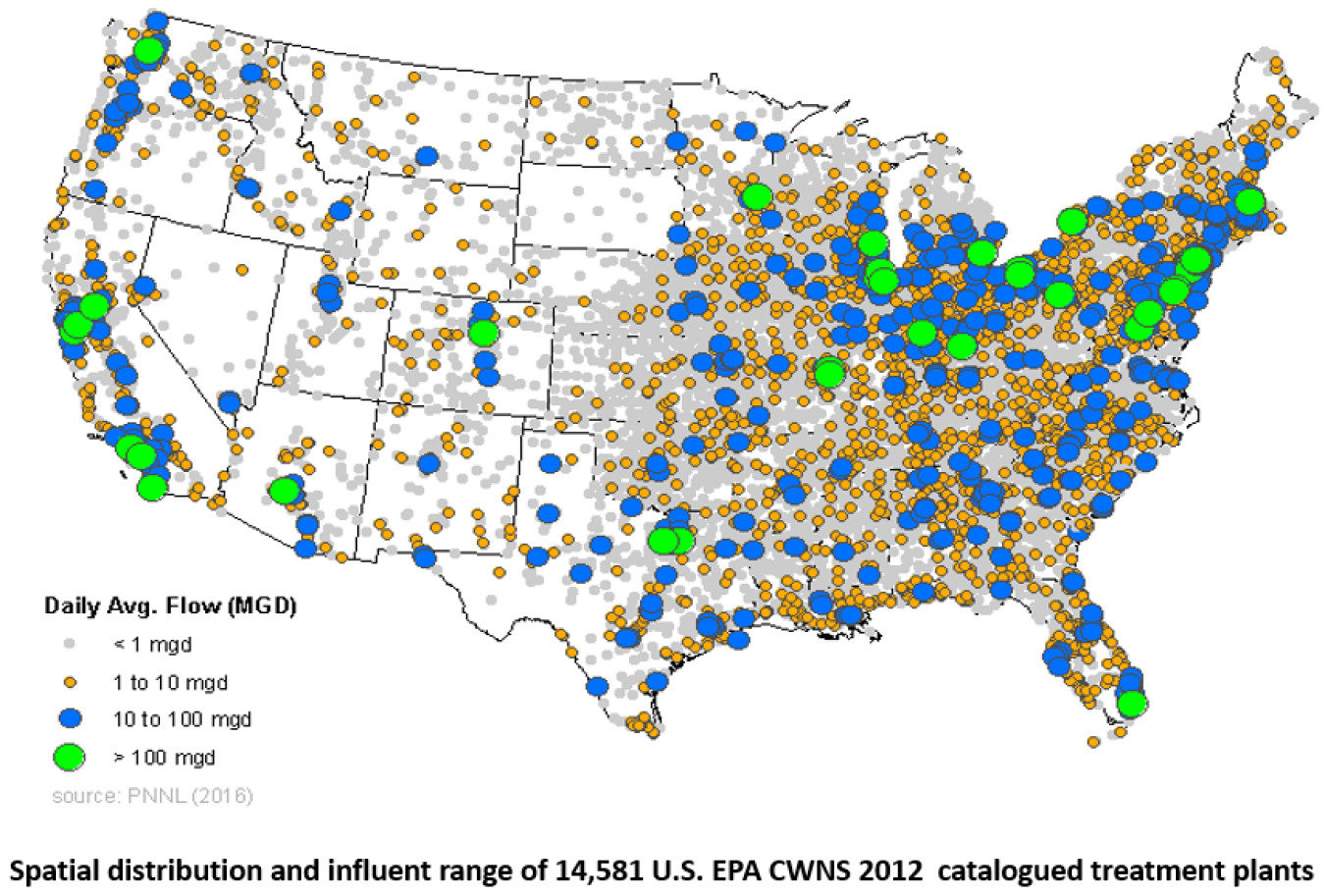
Double resource recovery from municipal wastewater
BACKGROUND – Wastewater treatment plants purchase about $2 billion of electricity each year and face more than $200 billion in future capital investment needs to meet water quality objectives. This can constrain municipal budgets. For example, energy consumption at wastewater treatment plants can account for a third or more of municipal energy bills. Wastewater treatment plants can address these challenges by recovering critical resources and turning them into marketable products. This can create new revenue streams for upgrading water treatment infrastructure, particularly in rural communities, prevent nutrient pollution, and provide new sources of alternative water supplies. Recovered resources include energy that can be used on-site or sold, nutrients, such as phosphorous and nitrogen that can be used as fertilizer, and clean water that can be reused for agricultural, industrial, and potable purposes.
CHALLENGE – Energy costs are expected to increase over time and affect affordability of water for businesses and consumers. Disposal of residual biosolids from water treatment is another significant cost for municipalities.
OBJECTIVE – The Water Security Grand Challenge aims to pursue research, development, deployment and other opportunities to increase resource recovery.
TIMELINE
- In June 2020, DOE announced $20 million in federal funding to improve water and wastewater treatment infrastructure.
- In January 2020, DOE launched the Water Resource Recovery Prize. The Prize accelerates resource recovery from municipal wastewater across the United States. In this two-phased competition, DOE seeks novel, systems-based solutions from multidisciplinary teams at small- to medium-sized water resource recovery facilities.
- In September 2019, DOE’s Advanced Manufacturing Office issued a Request for Information to develop a Water Resource Recovery Prize competition.
- DOE’s Better Buildings Sustainable Water Infrastructure of the Future Accelerator worked over a three year period with state, regional, and local agencies that engage with water resource facilities in their jurisdiction to accelerate a pathway toward a sustainable infrastructure.

